This is the 2012 film of the 2001 Yann Martel novel of the same name, directed by Ang Lee, who also made Crouching Tiger Hidden Dragon, Hulk and Brokeback Mountain. It is the story of a young man named “Pi” Patel, who recounts his life story to a writer. At 16, Pi and his family sail for Canada on board a freighter, carrying the animals from their zoo. They are Hindu vegetarians and have trouble with the French cook, who tells them that the cow and pig he serves up to them were vegetarian (where have we heard that joke before?) The ship encounters a massive storm and sinks. Pi survives the shipwreck and is adrift in the Pacific Ocean on a lifeboat, with a Bengal tiger named Richard Parker.
WTF sort of name is Richard Parker?

Well, the name comes from an English court case about cannibalism (yes, you are in the right blog).
Here’s the thing. It’s not easy to survive in a lifeboat at sea. There’s the sun beating down, the risk of being swamped by big waves, danger from sharks and whales, and most difficult of all – no food or water. Drinking water that is. As Coleridge said:
“Water, water, everywhere, And all the boards did shrink;
Water, water, everywhere, Nor any drop to drink.”
The “custom of the sea”, as British sailors used to call it, was that while it was not exactly encouraged, it was acceptable to eat whatever you could find in that situation, including your shipmates, preferably after they had died. But – not always.
In 1884, a small ship called the Mignonette was being sailed to Australia when it hit a big storm and sank. The four crew members survived in a lifeboat, not unlike the one in Life of Pi, for a couple of weeks on two tins of turnips and a turtle they managed to catch. When the 17 year old cabin boy fell into a coma, probably from drinking too much salt water, they slit his throat, drank his blood and ate him. His name was Richard Parker.
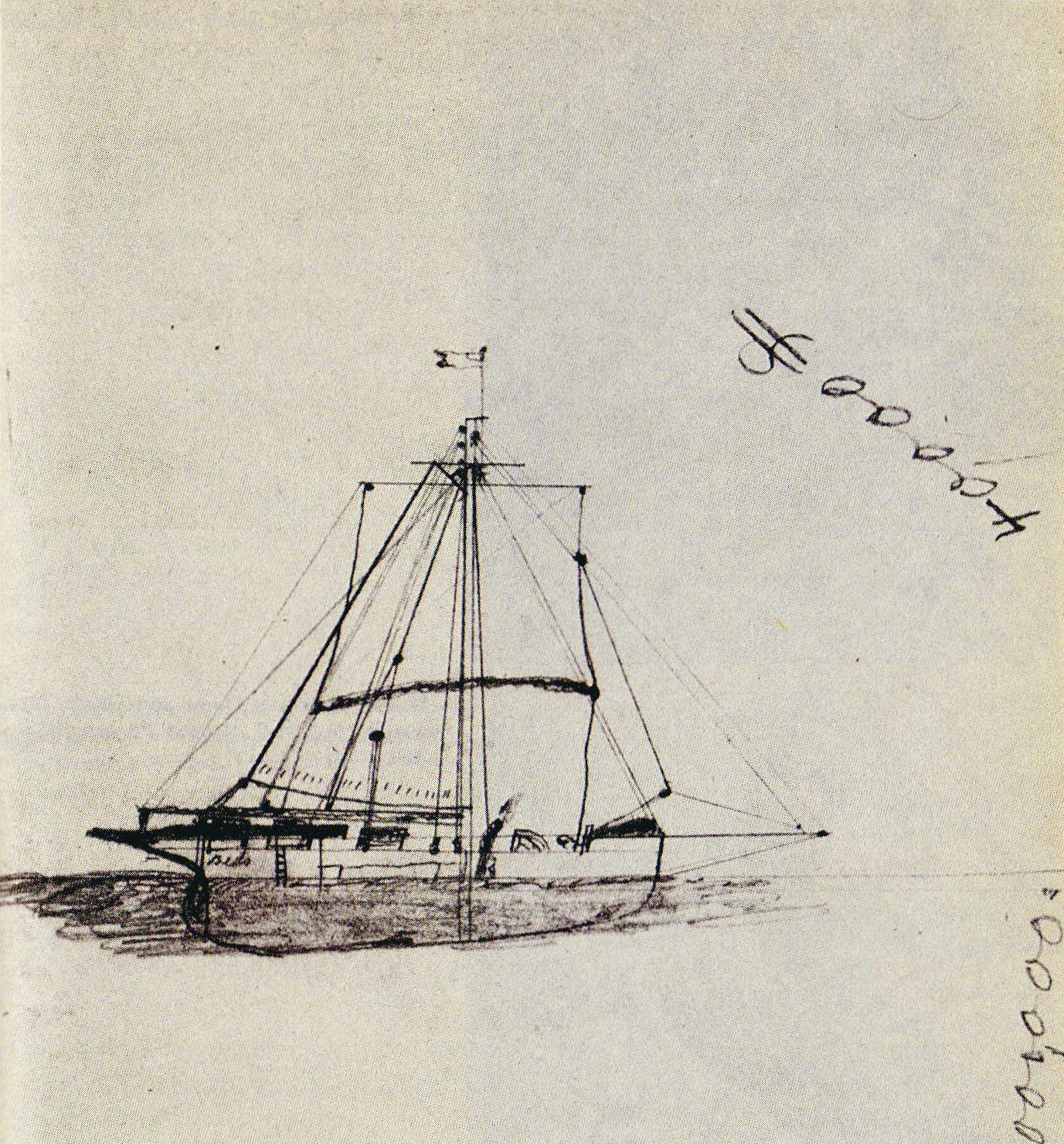
The captain and first mate were tried after their rescue and sentenced to be hanged, but their sentences were later commuted to life imprisonment, and the men ended up serving only six months. The case itself, Regina v. Dudley and Stephens, became an important precedent for the “defence of necessity”.
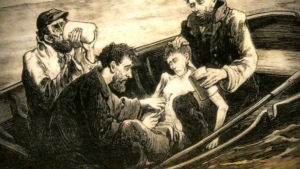
It was judged that, while cannibalism might be necessary under the custom of the sea, killing the boy to eat him was still murder, even if it saved the lives of three other men. Monty Python wrote a sketch based on the case:
The tiger, Richard Parker, is clearly named after this cabin boy. By some amazing coincidence, Edgar Allan Poe wrote a novel (his only one) almost fifty years earlier in 1838 called The Narrative of Arthur Gordon Pym of Nantucket, in which a character named Richard Parker becomes a victim of cannibalism by the ship’s remaining survivors after a shipwreck.
In the film (I knew we’d get there eventually), Pi escapes onto the lifeboat with a zebra, who breaks his leg in the fall, and an orang-utan. When the tiger, Richard Parker, jumps on the lifeboat, Pi leaps off, and witnesses the ship, with his family, sinking.

A spotted hyena emerges from under a tarpaulin covering half of the lifeboat and threatens Pi, forcing him to retreat to the end of the boat. The hyena kills the zebra and later the orang-utan. Richard Parker (the tiger) emerges from under the tarpaulin and kills the hyena. It’s the circle of life.
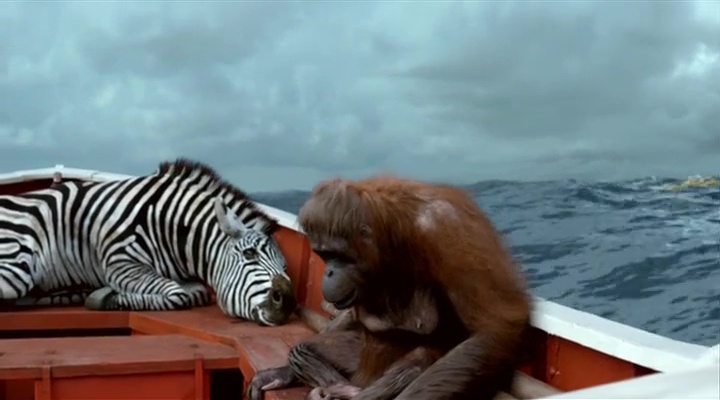
Pi takes refuge on a raft and comes to an uneasy truce with the tiger, feeding him fish that he manages to catch, overcoming his vegetarian ethics to save a fellow mammal. He answers the question so wearisomely put to most vegans: would you eat meat if you were starving?

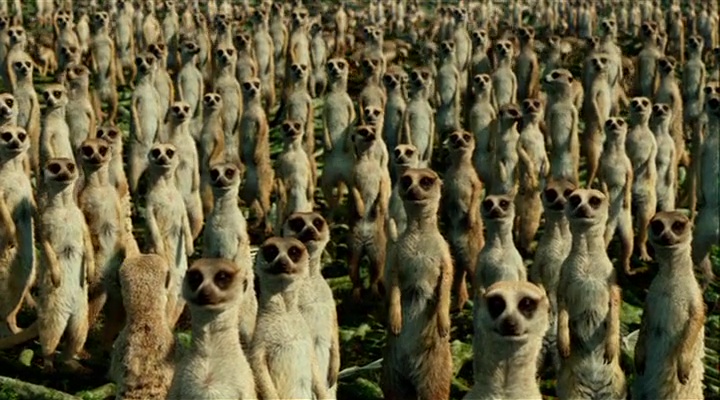
After sailing for some weeks, Pi and the tiger come across a floating island, filled with meerkats, who are very cute and assuage Richard Parker’s hunger. But the island turns out to be carnivorous, with the water turning to acid at night and consuming any animal on the ground. Some critics have interpreted this as mother earth turning against us as we fill the air with greenhouse emissions. At what point will we turn to cannibalism? As Pi finds out:
“Hunger can change everything you ever thought you knew about yourself”.
Reaching the coast of Mexico, Pi is disappointed to see Richard Parker disappear into the jungle without any farewell. Pi is rescued and brought to a hospital, where he tells the story to an insurance agent. The agent does not believe his story, and asks what really happened. Pi then tells an alternative story, in which his mother is the orang-utan, a sailor is the zebra, and the ship’s brutish French cook (played by Gerard Depardieu) the hyena. In this version, the cook kills the sailor and eats his flesh. He also kills Pi’s mother, but then Pi kills him with a knife, and uses his corpse as the cook used the sailor: as food and fish bait. The question of whether vegetarians would be carnivores in extremis is answered: yes they would, and they could be cannibals too.

The writer recognises the parallels between the two stories, noting that in the second version Pi is actually Richard Parker, unleashing the carnivore/cannibal within each of us. Pi says that it doesn’t matter which story is true, because his family still died either way. He then asks which story the author prefers, and the author chooses the first, to which Pi replies,

The Los Angeles Times called the film “a masterpiece”. It has grossed over $600 million at the box office, and has a “fresh” score of 87% on the Rotten Tomatoes site. The visuals, particularly the computer graphics, are astounding.

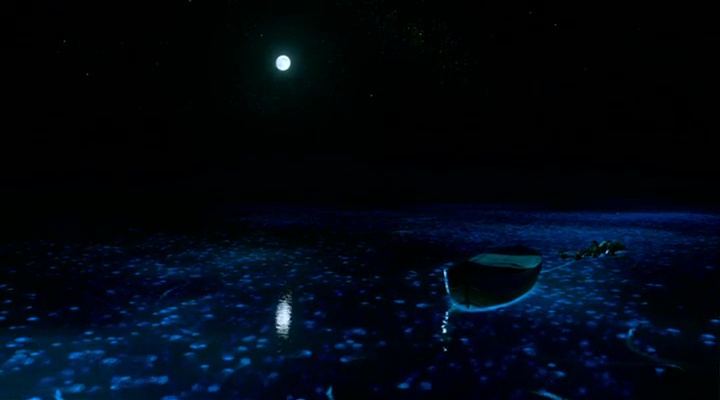
Pi describes Richard Parker as
“my savage partner who kept me alive”
And the moral of the story, as they used to say in children’s books, is that, depending on the circumstances, we can be the tiger, or we can be the cabin boy. There is a tiger and a cannibal hiding inside each of us, just under the thin tarpaulin of civilisation.

Taming the tiger, as Pi finds, is quite a trick.
The film is available as a 4K Ultra High Definition version which, given the superb graphics, is well worth seeing.
